Outsourcing full arch implant cases to dental labs streamlines complex workflows by combining external expertise with digital processes. Practices and procurement teams gain access to specialized skills, CAD/CAM design, and 3D printing without the need for in-house investment. The result is a smoother, more efficient case journey that reduces errors, shortens treatment timelines, and improves overall precision.
Key workflow benefits include:
- Simplified digital submissions – seamless STL/CAD file handling and reduced manual errors.
- Faster turnaround & reduced chair time – quicker design-to-delivery cycles through lab specialization.
- Expert support & QA – trained technicians and standardized processes lowering remakes.
- Better collaboration – SOP-driven communication and cross-border support improving alignment.
- Access to advanced tools – CAD/CAM, cloud-based design, and 3D printing integrated into workflows.
- Scalability & predictability – flexible outsourcing models adapting to demand while ensuring consistent results.
Outsourcing is not just about reducing costs; it transforms workflow efficiency. By partnering with specialized dental labs, practices and procurement leaders achieve greater reliability, faster case handling, and more predictable outcomes—turning workflow optimization into a long-term strategic advantage.
How Does Outsourcing Simplify Case Submission and Digital File Handling?
Submitting full arch cases becomes far less complicated when outsourcing to a digital-ready dental lab. The key is that clinics can send standardized files—often in STL or CAD format—through portals designed to minimize errors. This means less back-and-forth, faster validation, and a workflow that feels smoother for both clinicians and labs. In practice, outsourcing replaces fragmented file exchanges with structured, reliable submission systems that reduce stress on chairside staff and procurement managers.
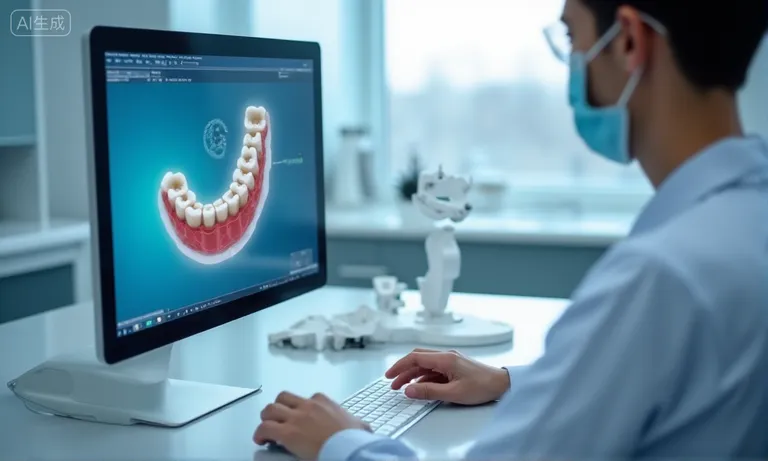
Dental-Lab-Digital-File-Submission
Why is STL/CAD file compatibility important when collaborating with dental labs?
File compatibility is often the first technical hurdle in cross-border outsourcing. A clinic may design a case in 3Shape or Exocad, but if the receiving lab cannot process those files correctly, errors and delays occur. Standardized formats such as STL ensure that margin lines, occlusion data, and implant positions remain intact during transfer. For full arch restorations, losing even minor scan details can mean costly remakes. By outsourcing to labs fluent in these universal file types, practices can protect data integrity and maintain efficiency.
How do digital portals streamline submission and reduce manual errors?
Digital portals act as structured entry points that prevent missing information. Instead of sending files via email or unsecured links, clinicians upload cases into a portal with mandatory fields for patient ID, restoration type, and material selection. This standardization cuts down on miscommunication and ensures technicians have complete instructions before design work begins. Practices that once dealt with frequent clarification calls now enjoy faster confirmations and fewer mistakes, leading to shorter turnaround times.
What communication efficiencies come from standardized file workflows?
When both clinic and lab follow the same digital workflow, communication becomes more proactive and less reactive. Standard templates for prescription details reduce ambiguity, while built-in notification systems keep both sides updated on progress. For example, a clinic in Sydney collaborating with an overseas dental lab receives automatic status updates once files are reviewed. Instead of waiting days for email replies, they know exactly when production begins. This clarity improves trust, reduces administrative friction, and allows teams to focus on patient outcomes rather than paperwork.
In many collaborations we’ve observed, even large DSOs found that outsourcing digital case submission eliminated most clerical bottlenecks. As an overseas dental lab partner, Raytops Dental Lab has often supported clients in moving from email-based submissions to structured digital workflows, significantly reducing error rates. For clinics evaluating outsourcing, embracing file compatibility and digital portals is often the first and most impactful workflow upgrade. For additional insights into file management standards, resources such as 3Shape’s support guides provide useful references for clinics and labs alike.
How Outsourcing Cuts Turnaround Time and Minimizes Chair Time
Outsourcing full arch cases reduces delays in both lab production and clinical chairside procedures. By working with specialized teams and digital workflows, practices shorten design-to-delivery timelines while lowering the time patients spend in the chair. The outcome is a faster, more predictable treatment process that benefits both clinicians and patients.
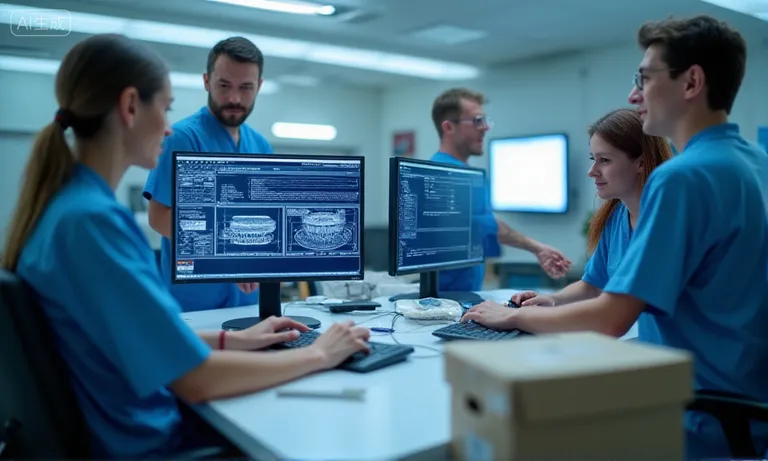
Dental-Lab-Turnaround-Workflow
How do specialized full arch teams accelerate complex restorations?
Dedicated full arch teams are trained to handle advanced implant protocols, which means fewer handoffs and less time wasted on error correction. Instead of general technicians juggling multiple case types, specialized teams focus only on complex restorations. Their expertise allows them to design frameworks, plan occlusion, and finalize esthetics with greater speed. A U.S. clinic working with an overseas dental lab reported that average turnaround times dropped by three days when cases were routed to specialized full arch units instead of general production lines.
Why do digital workflows shorten design-to-delivery timelines?
Digital systems replace manual impressions and model shipping with near-instant data transfer.
- Immediate scanning: Intraoral scans can be uploaded to the lab within minutes of capture.
- Automated design checks: CAD platforms validate margin lines and implant positions without manual review.
- Parallel processing: Multiple technicians can collaborate on design and milling simultaneously.
These efficiencies eliminate courier delays and reduce idle time, creating a leaner path from chairside scan to final restoration.
How does outsourcing reduce chair time for clinicians and patients?
- Fewer adjustments: Outsourced labs with advanced CAD/CAM reduce inaccuracies that often lead to repeated patient fittings.
- Streamlined appointments: Clinicians receive restorations that are closer to final fit, requiring less chairside grinding or modification.
- Predictable scheduling: Knowing that restorations will arrive on time enables clinics to plan patient visits more efficiently.
For patients, this means fewer visits and shorter appointments. For clinics, it translates to higher daily throughput and better use of resources.
Several DSOs we’ve collaborated with found that outsourcing not only improved delivery punctuality but also made appointment planning more reliable. As an overseas dental lab, Raytops Dental Lab has consistently helped clinics lower chairside adjustments by supplying restorations that align with digital designs from the outset. For further reading on reducing turnaround time with digital dentistry, Dental Economics provides practical insights for practice owners.
How Specialized Lab Expertise Drives Workflow Efficiency
When outsourcing full arch cases, workflow efficiency often depends on whether the lab team has specialized expertise. Trained technicians and dedicated implant teams minimize remakes, improve predictability, and build quality assurance into each step. This reduces wasted time and creates a smoother experience for both clinics and patients.

Dental-Lab-Full-Arch-Expertise-QC
Why does access to trained technicians reduce remakes and rework?
Remakes often occur when design margins or implant interfaces are misinterpreted. Experienced technicians trained specifically in full arch restorations can anticipate these errors before production begins. Their skill in margin marking, occlusion planning, and bridge framework design reduces the risk of fit problems. A European clinic that partnered with an overseas dental lab reported remake rates dropping from 8% to below 3% after shifting their cases to technicians with implant specialization. This expertise translates directly into cost savings and smoother case progression.
How do labs specialized in full arch implant cases improve predictability?
Specialization creates structured workflows that general labs often cannot match.
| Workflow Step | General Lab Handling | Specialized Full Arch Lab Handling |
|---|---|---|
| Case intake | Varies by technician, risk of inconsistent review | Dedicated implant coordinator validates files before production |
| Design phase | General CAD designer, slower learning curve | Trained implant CAD team ensures precise abutment and occlusion design |
| QC checkpoints | Limited spot checks | Multiple inspection stages with implant-specific criteria |
| Delivery | Higher risk of last-minute adjustments | Predictable fit and fewer chairside corrections |
This side-by-side comparison shows why clinics working with specialized full arch labs experience more consistent delivery outcomes and fewer workflow disruptions.
What workflow risks are avoided through lab quality assurance?
- Material mismatches prevented: QA teams verify the requested material aligns with the prescription before milling.
- Implant component errors reduced: Part compatibility is cross-checked with supplier libraries to avoid costly delays.
- Occlusion accuracy confirmed: Digital articulators and reference scans are used to ensure proper bite alignment.
- Documentation standardized: Clear case records minimize disputes and provide traceability for future remakes.
These QA practices turn potential risks into managed checkpoints, protecting both clinic schedules and patient expectations.
In our collaborations, many procurement managers told us that outsourcing to specialized implant labs gave them greater confidence in planning multi-unit or complex restorations. As an overseas dental lab, Raytops Dental Lab has invested in specialized QC workflows that help clinics reduce remakes and achieve more predictable outcomes. For additional industry comparisons, the Journal of Prosthetic Dentistry provides evidence-based studies on the impact of lab expertise on restoration accuracy.
How Does Outsourcing Enhance Collaboration Between Clinical and Lab Teams?
Outsourcing improves collaboration by replacing fragmented communication with structured workflows and clear feedback loops. When clinical teams and labs align through SOPs, multilingual support, and digital standards, the result is faster case progression and fewer misunderstandings across borders.
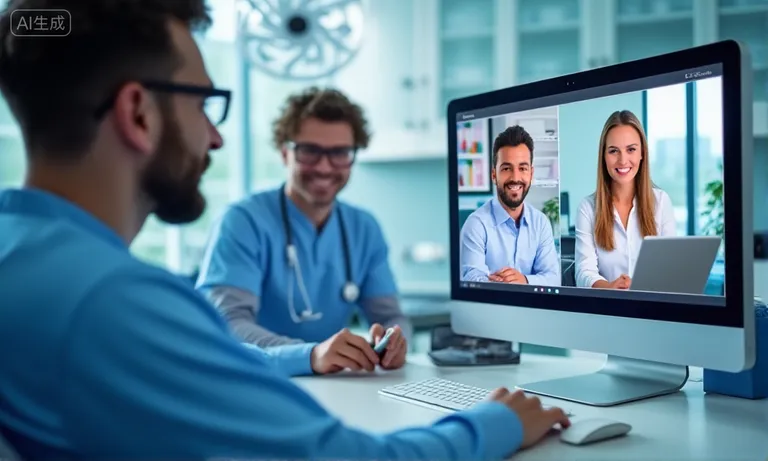
Clinical-Lab-Digital-Collaboration
How do clear SOPs and feedback loops reduce back-and-forth communication?
- Standardized instructions: SOP templates ensure that every case submission includes restoration type, material, and delivery preference.
- Built-in checkpoints: Labs return structured feedback (fit verification, margin confirmation) at specific milestones instead of ad-hoc emails.
- Closed-loop learning: Feedback from completed cases is incorporated into future submissions, reducing repeat errors.
By moving from reactive clarification to proactive alignment, both clinics and labs cut down on wasted communication cycles.
Why do multilingual and cross-border labs improve collaboration efficiency?
International outsourcing often raises the concern of language barriers, but labs that invest in multilingual support actually remove friction. A procurement manager in Toronto reported smoother collaboration with an overseas dental lab whose coordinators handled both English and Mandarin communication seamlessly. Multilingual capability eliminates misinterpretations in prescriptions or material requests, while time zone differences become an advantage—labs can process files overnight, and clinics find updates waiting the next morning. This cross-border rhythm turns potential obstacles into productivity gains.
How does outsourcing align design expectations with delivery standards?
- Shared digital previews: Before milling, labs provide 3D previews so clinicians can verify occlusion and esthetics.
- Step-by-step approval: Clinicians sign off on digital designs before production begins, preventing costly adjustments later.
- Delivery matched to standards: Final restorations follow the agreed design specifications, ensuring consistency with clinical intent.
This staged approval process ensures that what the clinic expects is exactly what arrives in the delivery box.
In our partnerships, we’ve seen how structured collaboration improves trust between clinical and lab teams. As an overseas dental lab, Raytops Dental Lab often supports clients with multilingual coordination and SOP-driven processes that shorten feedback cycles. For further guidance on SOPs in dentistry, the ADA guidelines provide practical frameworks for clinical-lab communication.
How Do Outsourced Labs Leverage Digital Tools to Improve Workflow?
Outsourced dental labs gain workflow advantages by adopting advanced digital technologies that many clinics cannot maintain in-house. From CAD/CAM milling to 3D printing and cloud-based platforms, these tools deliver precision, transparency, and continuous efficiency improvements.
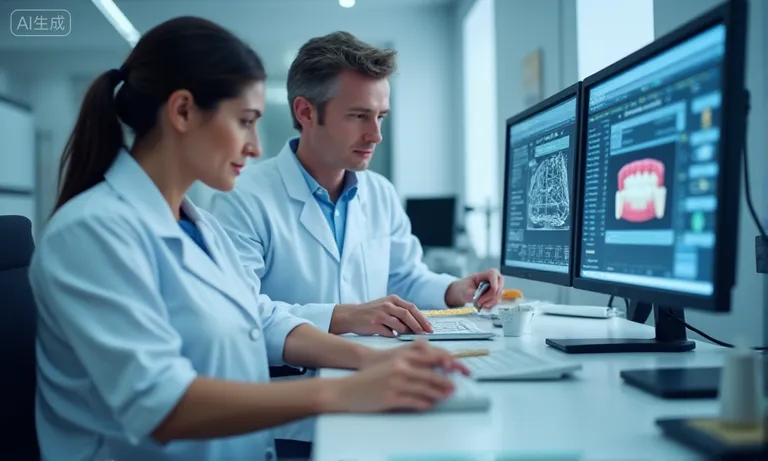
Dental-Lab-CADCAM-3D-Printing
Why does access to CAD/CAM and 3D printing improve precision and efficiency?
Digital milling and additive manufacturing provide accuracy that manual methods cannot match. CAD/CAM ensures consistent margin fit, while 3D printing allows rapid prototype creation at low cost. For full arch restorations, this means faster iteration on frameworks and higher accuracy on implant interfaces. A clinic in Melbourne outsourcing to a digital-ready lab reported a 25% reduction in adjustment time because CAD/CAM consistently delivered near-final fit restorations. This precision reduces rework, boosts clinician confidence, and accelerates the entire treatment cycle.
How do cloud-based design platforms enhance visibility and tracking?
- Real-time collaboration: Clinicians and labs review design files simultaneously across borders.
- Case status transparency: Cloud dashboards display production stage, estimated delivery, and approval checkpoints.
- Centralized documentation: All prescriptions, scans, and revisions are stored in one secure portal, reducing lost communication.
These features give clinics visibility into lab progress, enabling better scheduling and accountability. Instead of waiting for email updates, procurement teams can track every stage of production at a glance.
What workflow improvements come from labs’ continuous tech investment?
| Investment Area | Workflow Impact | Clinic Benefit |
|---|---|---|
| AI-driven design validation | Detects margin/implant errors early | Fewer remakes, predictable delivery |
| Automated milling centers | 24/7 production cycles | Faster turnaround on large volumes |
| Digital QA systems | Real-time quality control checkpoints | Higher accuracy, reduced chairside adjustments |
Labs that reinvest in emerging technologies future-proof their services and keep pace with clinical demand. For clinics, partnering with such labs means access to capabilities without the capital burden of buying equipment themselves.
From experience, many DSOs have told us that outsourcing to digital-first labs not only improved precision but also gave them a clearer view of the entire workflow. As an overseas dental lab, Raytops Dental Lab integrates CAD/CAM, 3D printing, and cloud-based systems to help clients gain both speed and predictability. For further insights into digital transformation in dentistry, Inside Dental Technology frequently publishes case studies and technology reviews.
How Does Outsourcing Support Scalability and Service Expansion?
Outsourcing allows dental practices to expand services and scale case volumes without adding internal staff or costly infrastructure. By leveraging flexible lab capacity and advanced workflows, clinics can manage growth while keeping overhead stable.
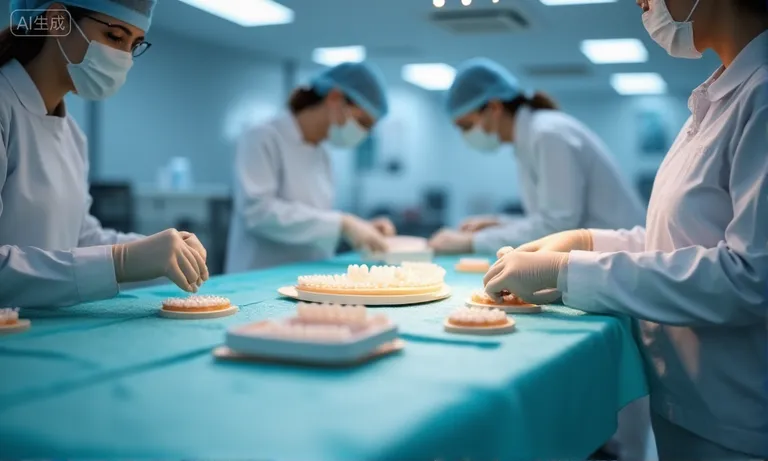
Dental-Lab-Scalability-International-Shipping
Why does outsourcing help practices scale case volumes without extra staff?
- External capacity on demand: Labs handle higher case volumes during peak seasons without requiring clinics to hire additional technicians.
- Batch efficiency: Outsourced labs are structured to process cases in parallel, maintaining speed at scale.
- Reduced HR burden: Clinics avoid training, onboarding, and payroll costs for new staff while still expanding output.
This scalability lets clinics focus on patient care while the lab absorbs the complexity of growing case volumes.
How does outsourcing enable offering advanced services at lower cost?
Outsourcing provides access to specialized services—such as full arch implant restorations, digital hybrid frameworks, or advanced zirconia work—that may be cost-prohibitive for smaller practices to build internally. By partnering with labs that already invest in technology and training, clinics can extend their service portfolio without large capital investment. For example, a mid-sized U.K. practice began offering full arch zirconia cases by collaborating with an overseas dental lab, reducing per-unit costs by nearly 30% compared to domestic production. This approach makes advanced treatments accessible to more patients while maintaining clinic profitability.
How do flexible outsourcing models adapt to workload fluctuations?
- Case-by-case outsourcing: Clinics send complex cases selectively while retaining simple workflows in-house.
- Hybrid outsourcing agreements: DSOs set baseline monthly volumes but can scale up during busy months without penalty.
- Seasonal adjustments: Labs absorb fluctuations caused by holiday closures or regional patient demand surges.
These flexible models help clinics stay agile, ensuring they can serve patients consistently without overcommitting to fixed internal resources.
Many procurement managers value outsourcing as a way to stabilize operations during unpredictable demand cycles. As an overseas dental lab, Raytops Dental Lab supports clinics with scalable production models that adapt to both short-term spikes and long-term growth. For further discussion on scalability in dental practice management, Dentistry Today offers industry perspectives and strategies.
How Do Outsourced Workflows Improve Predictability and Outcomes?
Outsourcing enhances predictability by combining digital workflows with strict quality assurance protocols. These systems reduce remakes, deliver consistency across multiple cases, and ensure that final restorations meet clinical expectations.
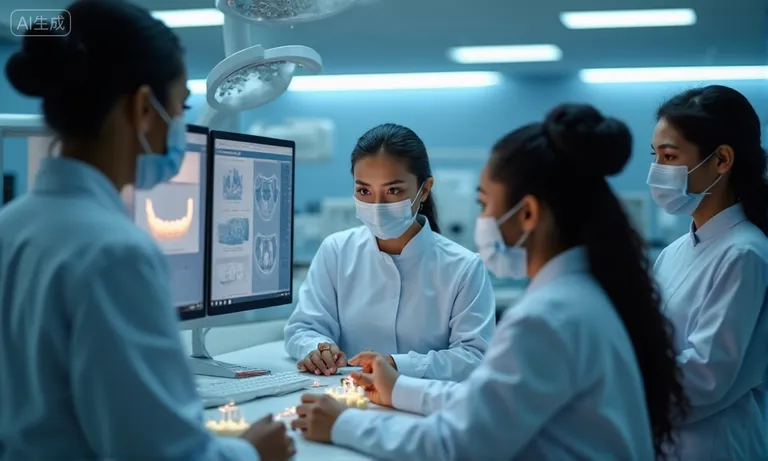
Dental-Lab-QA-Digital-Tracking
Why are digital workflows more reliable in reducing costly remakes?
Digital workflows allow precise design validation before production begins. By detecting margin gaps, angulation errors, or material mismatches early, labs prevent downstream issues that lead to remakes. For full arch implant cases, even minor errors can create costly delays for both clinics and patients. A practice in Chicago outsourcing to a digital lab saw remake frequency fall by nearly half after switching from conventional impressions to intraoral scans processed through CAD/CAM. The upfront digital verification pays dividends in predictable outcomes.
How does outsourcing provide consistent results across multiple cases?
- Standardized processes: Outsourced labs use uniform protocols for scanning, design, and milling, ensuring repeatability.
- Dedicated case coordinators: Clinics often work with the same project managers, reducing variability in communication.
- Cross-case benchmarking: Labs track performance data across hundreds of cases, refining techniques to maintain steady quality.
These practices provide clinics with the assurance that each case will match prior outcomes, a critical factor for DSOs managing multi-location workflows.
What role do QA processes play in ensuring predictable outcomes?
| QA Step | Impact on Workflow | Clinic Benefit |
|---|---|---|
| Initial file validation | Confirms STL/CAD integrity before design | Prevents errors from propagating |
| Mid-production checks | Inspects framework fit and occlusion alignment | Reduces risk of late adjustments |
| Final inspection | Verifies esthetics, strength, and delivery readiness | Guarantees restorations match expectations |
This structured QA pipeline ensures that errors are caught at the right stage, protecting both clinical schedules and patient trust.
Procurement managers often cite consistency as their top reason for outsourcing. As an overseas dental lab, Raytops Dental Lab applies multi-stage QA and digital tracking systems that give clinics predictable outcomes across high-volume case loads. For further evidence on predictability in prosthodontics, the International Journal of Prosthodontics publishes peer-reviewed studies on restoration accuracy and outcome reliability.
Key Workflow Benefits of Outsourcing Full Arch Implant Cases
Outsourcing full arch implant cases transforms workflows by combining efficiency, scalability, and predictability. Clinics benefit not only from reduced turnaround times but also from better collaboration, lower rework rates, and access to digital innovations that reshape treatment delivery.

Dental-Lab-Workflow-Benefits-Checklist
What are the top workflow benefits practices can expect?
- Faster turnaround and on-time delivery
- Reduced chair time through more accurate restorations
- Lower remake rates due to digital verification and QA
- Transparent case tracking with digital platforms
- Flexible capacity that scales with demand
These benefits align directly with the priorities of both clinicians and procurement managers, making outsourcing a strategic workflow solution.
How should procurement teams evaluate workflow improvements in outsourcing?
Procurement teams should look beyond headline costs and examine measurable workflow metrics. Key indicators include remake rates, average turnaround times, communication cycles, and scalability during peak demand. Comparing these factors across different labs highlights whether outsourcing is delivering real operational gains. A DSO in California, for example, tracked workflow KPIs before and after outsourcing and found a 20% improvement in on-time case delivery, which justified a long-term supply agreement.
Why is outsourcing a workflow transformation beyond just cost savings?
- Integrated efficiency: Outsourcing consolidates submission, production, and delivery into structured digital pipelines.
- Strategic flexibility: Clinics can expand advanced services without adding infrastructure.
- Sustainable quality: Continuous lab investment in CAD/CAM and QA raises long-term standards across cases.
This transformation shifts outsourcing from a tactical cost decision into a strategic operational upgrade that enhances clinical reliability and patient satisfaction.
Across global markets, clinics that embrace outsourcing see more than lower prices—they see workflows transformed into predictable, scalable, and digitally enabled systems. As an overseas dental lab, Raytops Dental Lab has supported clients through these transitions, embedding efficiency into every stage of collaboration.
Conclusion
Outsourcing full arch implant cases is no longer just about lowering production costs—it is about transforming workflows into predictable, scalable, and digitally integrated systems. By partnering with an overseas dental lab, clinics gain access to specialized expertise, advanced technology, and flexible capacity that drive measurable improvements in turnaround time, collaboration, and patient outcomes. The most successful partnerships are built on transparency and shared standards, ensuring that every case moves smoothly from design to delivery. For clinics and procurement teams, outsourcing represents a strategic upgrade to long-term efficiency and reliability.


